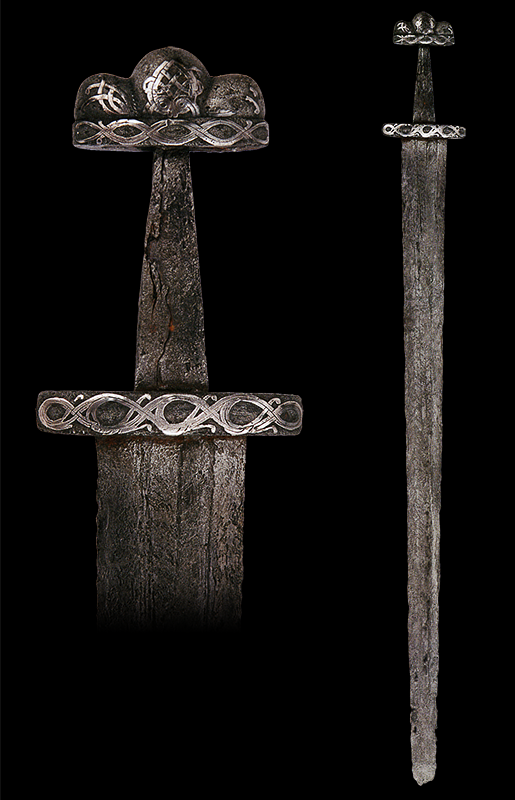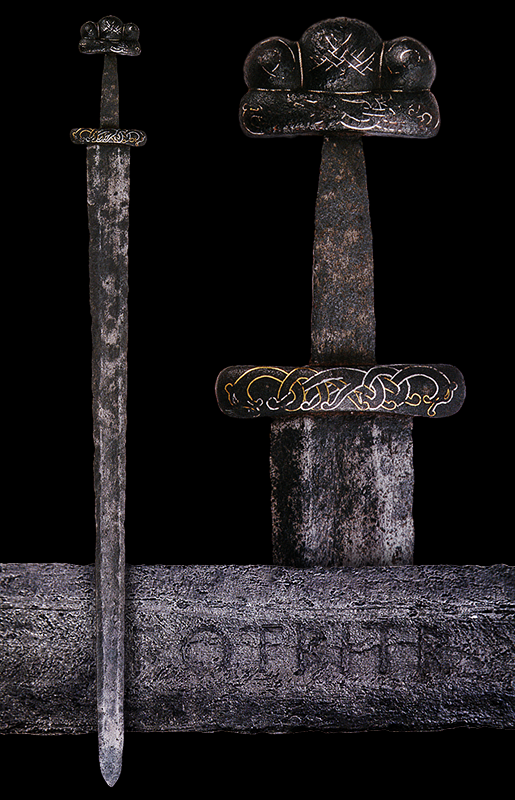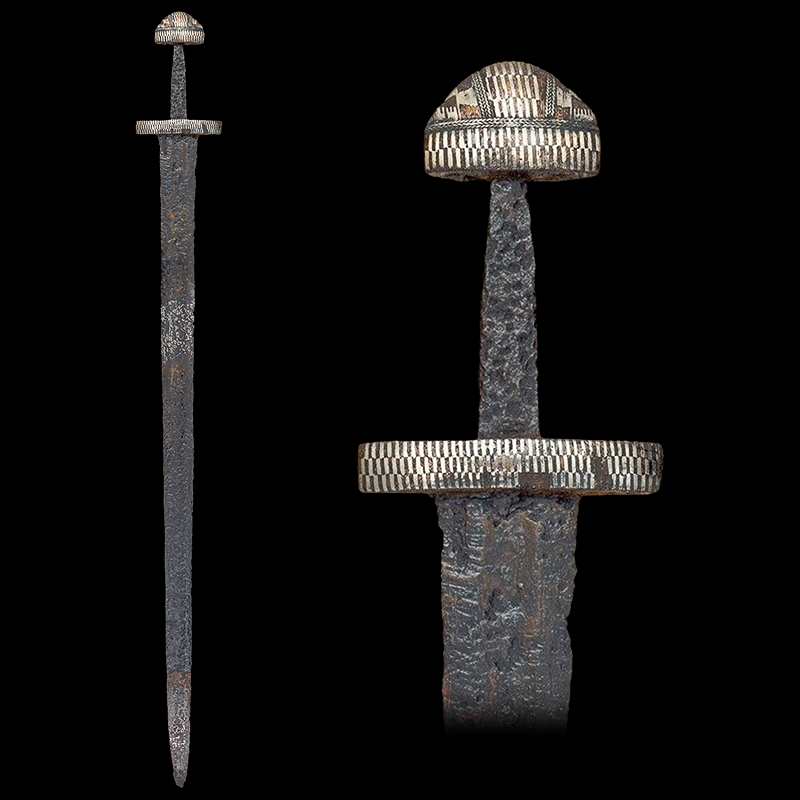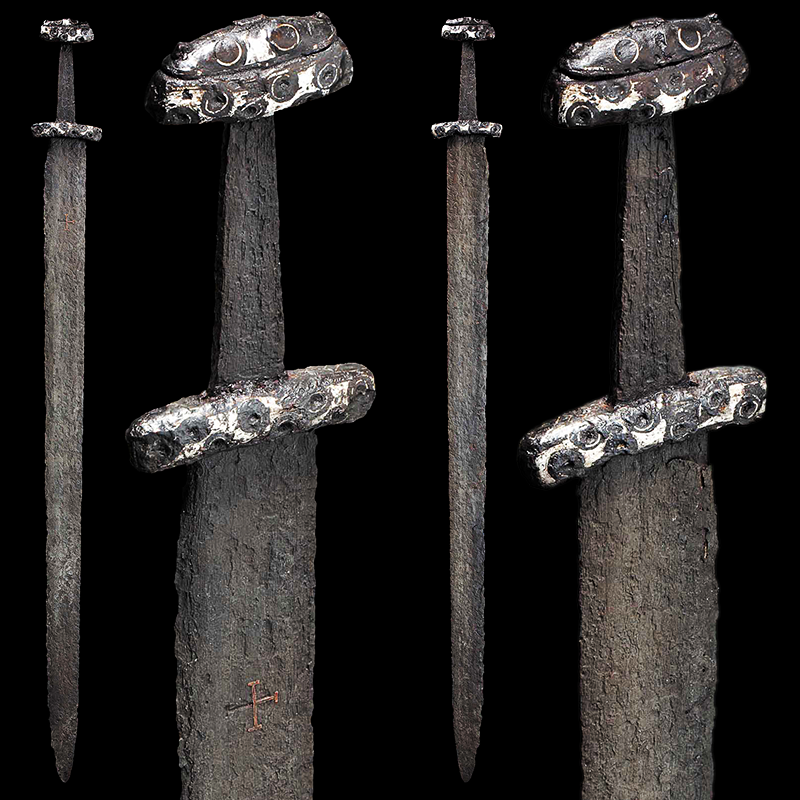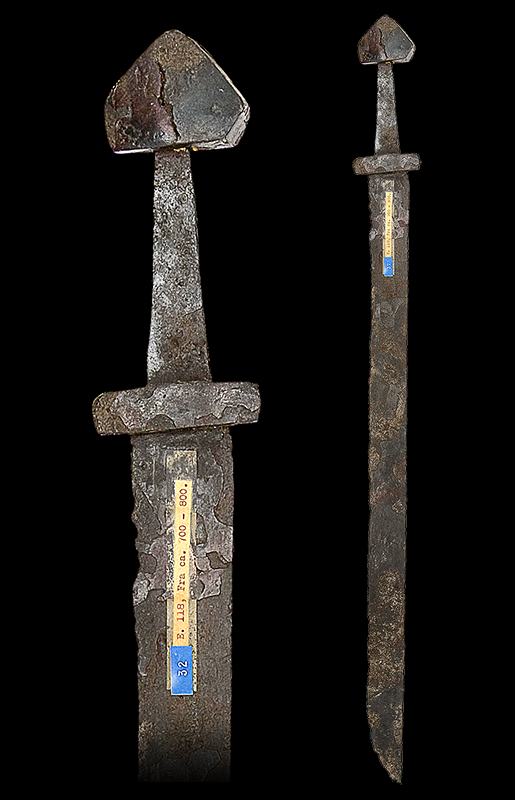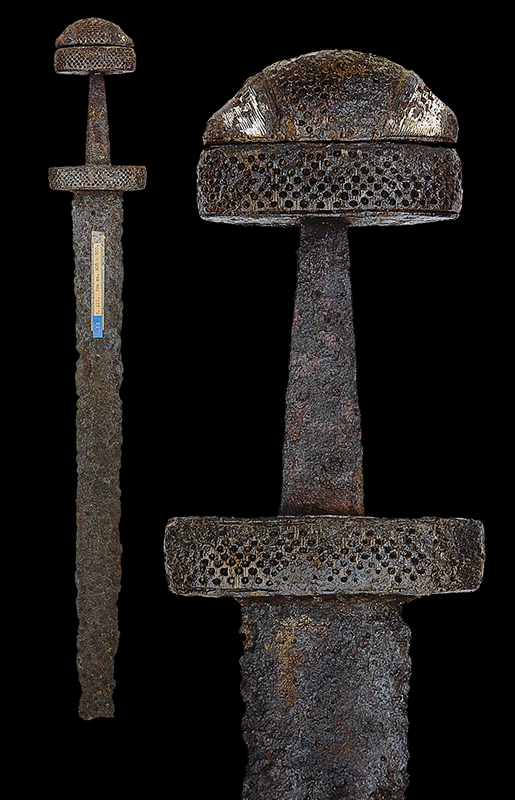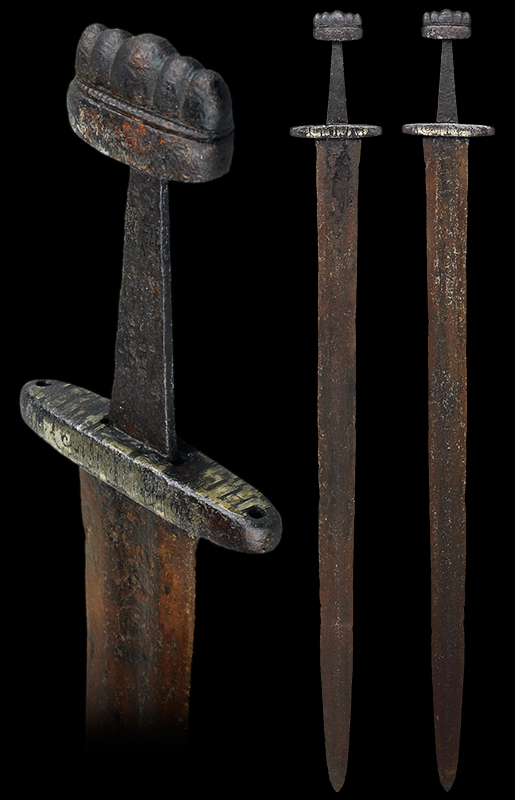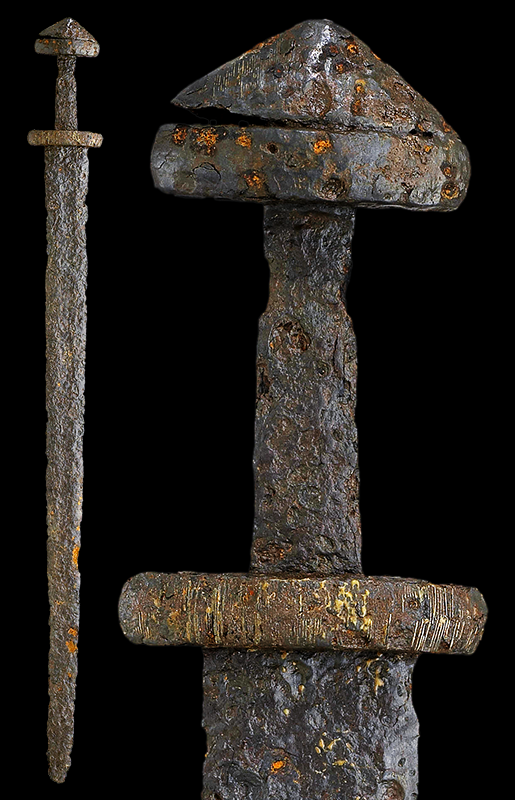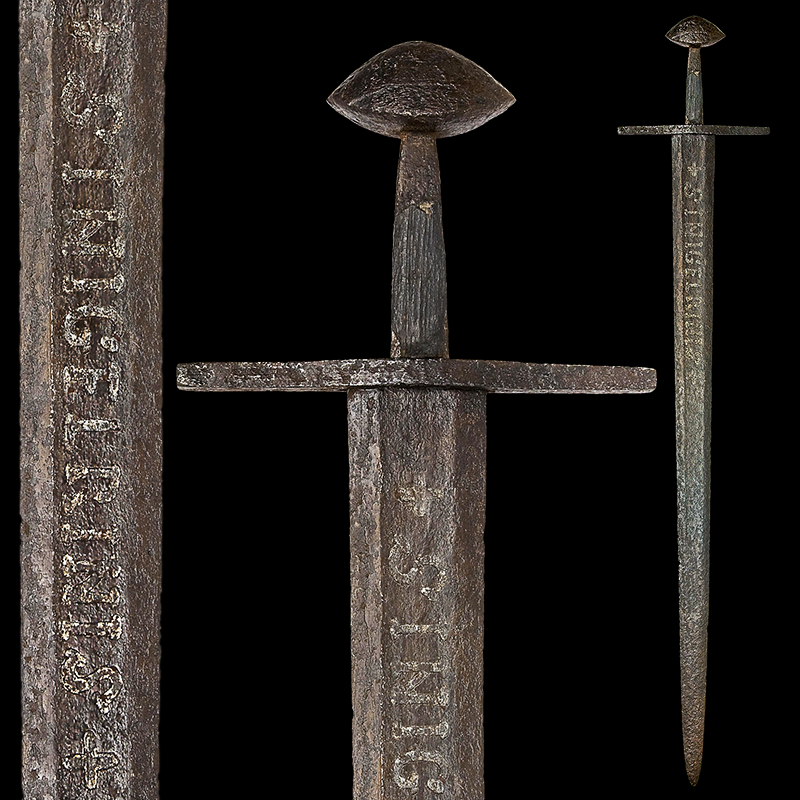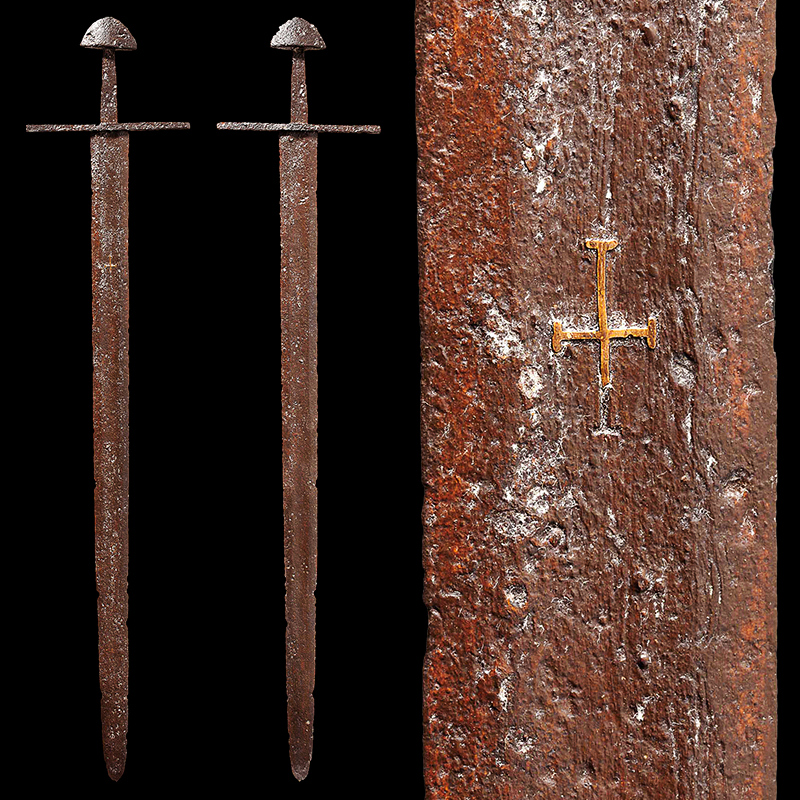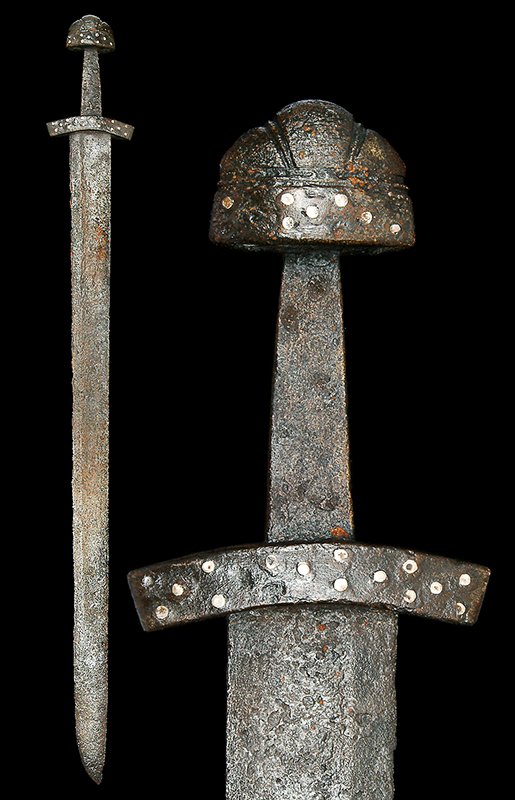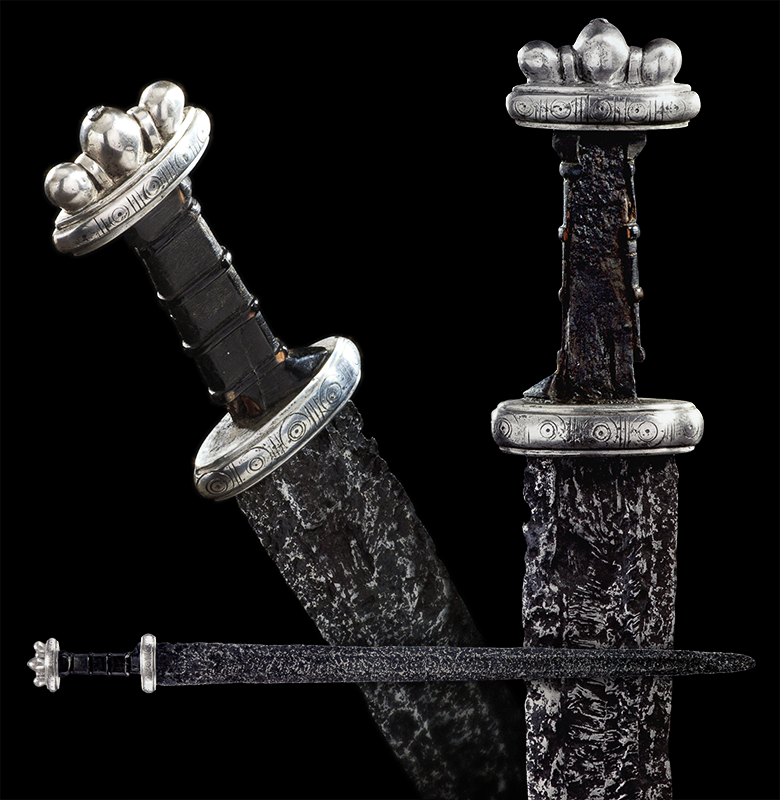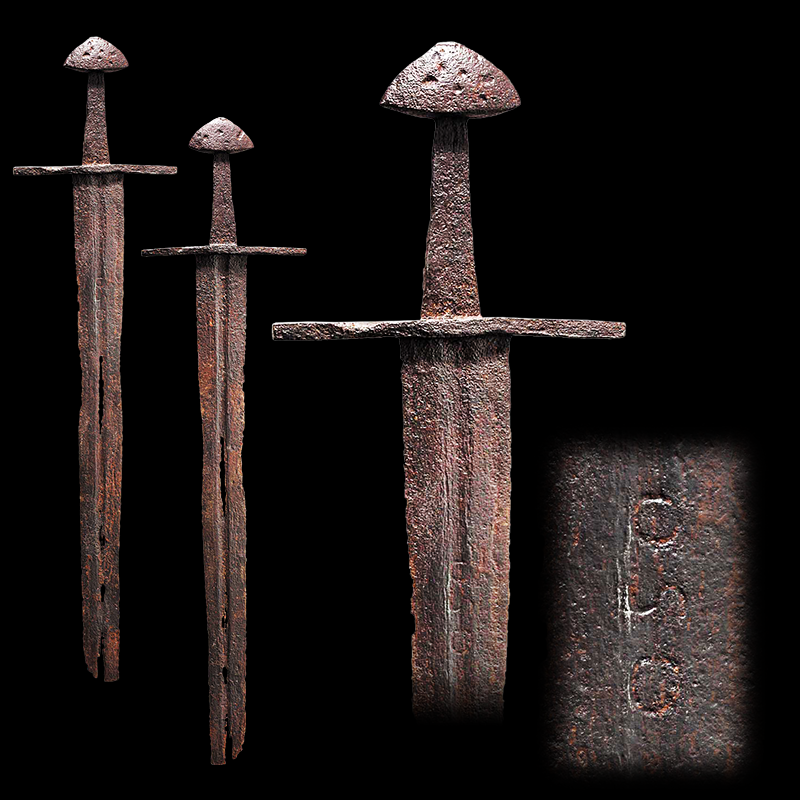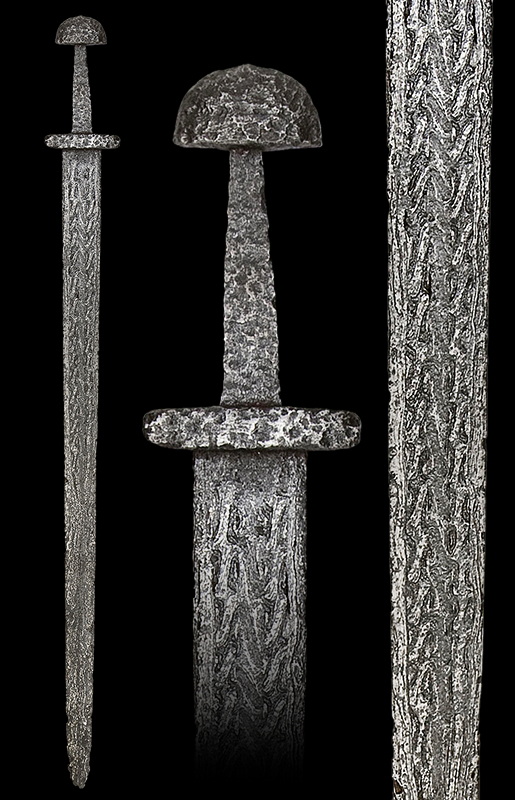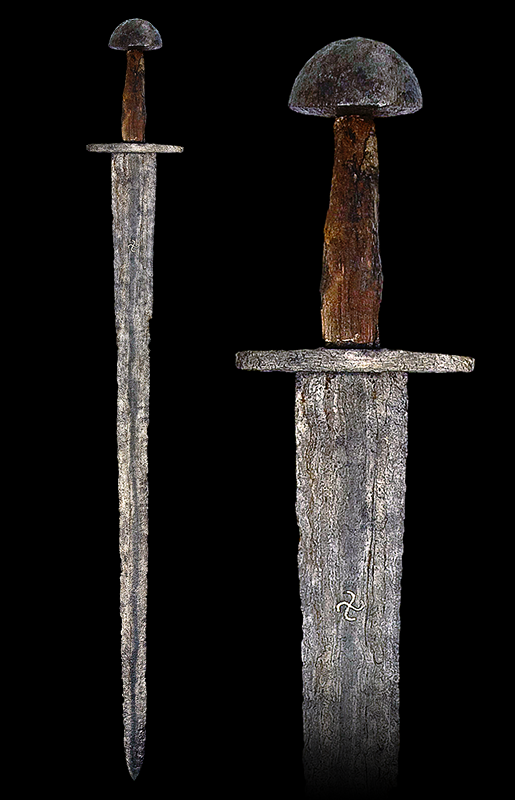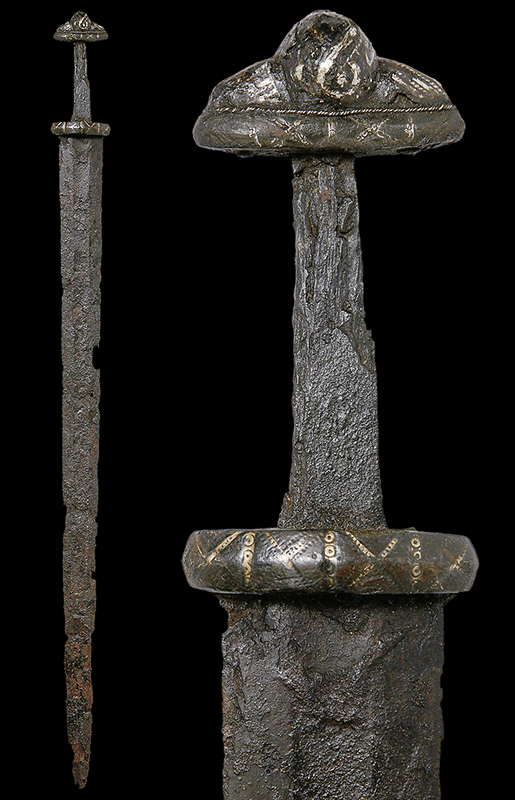#15: A Fine Viking Sword with Gold and Silver Inlaid Blade and Hilt, 11th century
The double-edged blade with broad, well-preserved cutting edges and wide fullers, one side of the blade being inlaid for almost its entire width with a Celtic cross, the arms of the cross formed of twisted gold wire and the decorative strap-work and circle formed of silver wire. The hilt comprising a straight, stout cross-guard, a broad, sturdy tang and a three-lobed pommel, the central lobe very pronounced, that is riveted to the upper guard. The lateral faces of the hilt inlaid with a series of isosceles triangles in silver; those on the guards in counterchanged strips and all edged with lines of twisted gold wire.
Overall length: 94 cm (37"); Blade length: 78.75 cm (31")
Jan Petersen did not designate a type to this style of hilt in his masterly and comprehensive study of hilt-forms, but there is no doubt this weapon belongs to the group of magnificent swords that have been mainly found in the eastern Baltic region. To date, a total of seventeen weapons of this type are known, all from Finland. They all have silver decorated hilts, with most exhibiting silver ornament on the grips, the example from Leikkimäki, Kokemäki (Suomen kansallismuse, Helsinki, NM 1174:1) having Urnes-style animals with spirals and palmettes and gold inlay on both sides of the blade. Another member of this select group is in the Musée de l'Armée in Paris (Inv. No. JPO 2258).
The outstanding decoration on the cross-guard, pommel and upper guard is virtually complete. Given that this weapon is almost certainly a grave-find, it is very uncommon to encounter this degree of survival of decoration. It is also extremely rare to see triangles decorating a sword hilt, although another example is known in a Russian collection. Inlaid diamond shapes are far more common as hilt decoration, a fine example being the 10th century sword from the River Witham, found opposite Monk’s Abbey and now in the British Museum (Inv. No. 1848, 10-21 1).
The use of the Celtic cross on the blade of a sword is a further extremely rare feature of our weapon and it serves to emphasize the importance of this remarkable and lovely sword. The quality, quantity and richness of the decoration upon this sword inevitably leads one to the conclusion that its owner was a chieftain or person of noble birth. The blade is not pattern-welded but, instead, made up of a homogeneous billet of steel forged into shape, ground and polished: it may well have been imported from the region of the Rhineland.
The forging of a blade was a skillful and complex procedure and most blades of the Viking Age were constructed using a process called pattern-welding. To achieve this process, bundles of iron rods with different properties and differing concentrations of trace elements were twisted together to form a rope-like bar, a procedure noted by the 9th century Arab scholar al-Kindi when he studied the construction of European blades. The bar was then heated and hammer-welded into one piece. Gradually, the blade would be fabricated to form the central fullers and both cutting edges. Rough grinding, shaping and final
polishing would reveal the magical patterns, which would generally be of the ‘Blood-eddy’ form (Blodida, meaning interlinked swirls) or the ‘Ann’ configuration (Old Norse for the swathes of mown corn). Frequently, there would be a combination of both. Recent scientific research has shown that, often, three millimeters of hard steel was hammer-welded on to each cutting edge after forging in order to provide an excellent and robust cutting edge.
It was the work of the warriors to ensure that the forge fires burnt brightly:
“We will venture ahead Roughly in conflict To redden our sword Where swords must be reddened.”
--The Saga of the Icelanders, Ch. 136.
The Old Norse sources contain very little information regarding the forging of sword blades and the stories are more fabulous than factual. However, combining that evidence with archaeological evidence tells us something of the craft-mystery of the weapon-smith. The sagas speak of the secrets of the smith being jealously guarded and the se
crecy of his art associating him closely with supernatural powers. The sagas do, however, have many detailed references to sword testing, such as striking a blow at an anvil, to ensure the blade would not shatter or break.
Literature:
Petersen, J., De Norske Vikingesverd (Oslo, 1919)
Peirce, I.G., Swords of the Viking Age (Woodbridge, Suffolk, 2002), pp. 77-79 and p. 138
Leppäaho, J. Späteisenzeitliche Waffen Aus Finland (Helsinki, 1964), pp.106-107, 110-111, 112-113
McGrew, J., Sturlunga Saga, Vol. 1. (New York, 1970)
Copyright © Peter Finer
 Attachment: 560.46 KB
Attachment: 560.46 KB
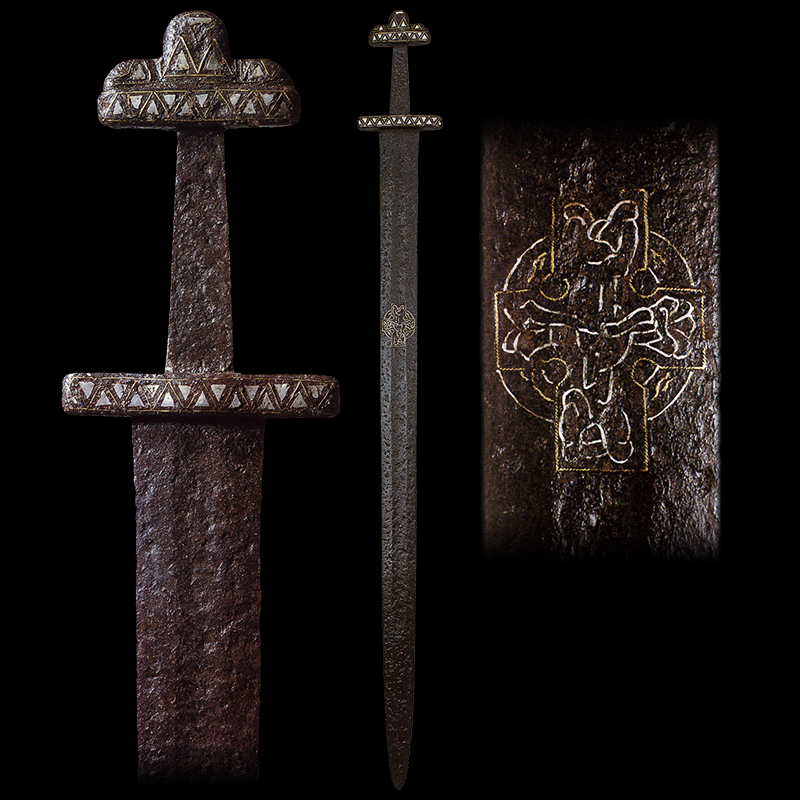
A Fine Viking Sword with Gold and Silver Inlaid Blade and Hilt, 11th century
